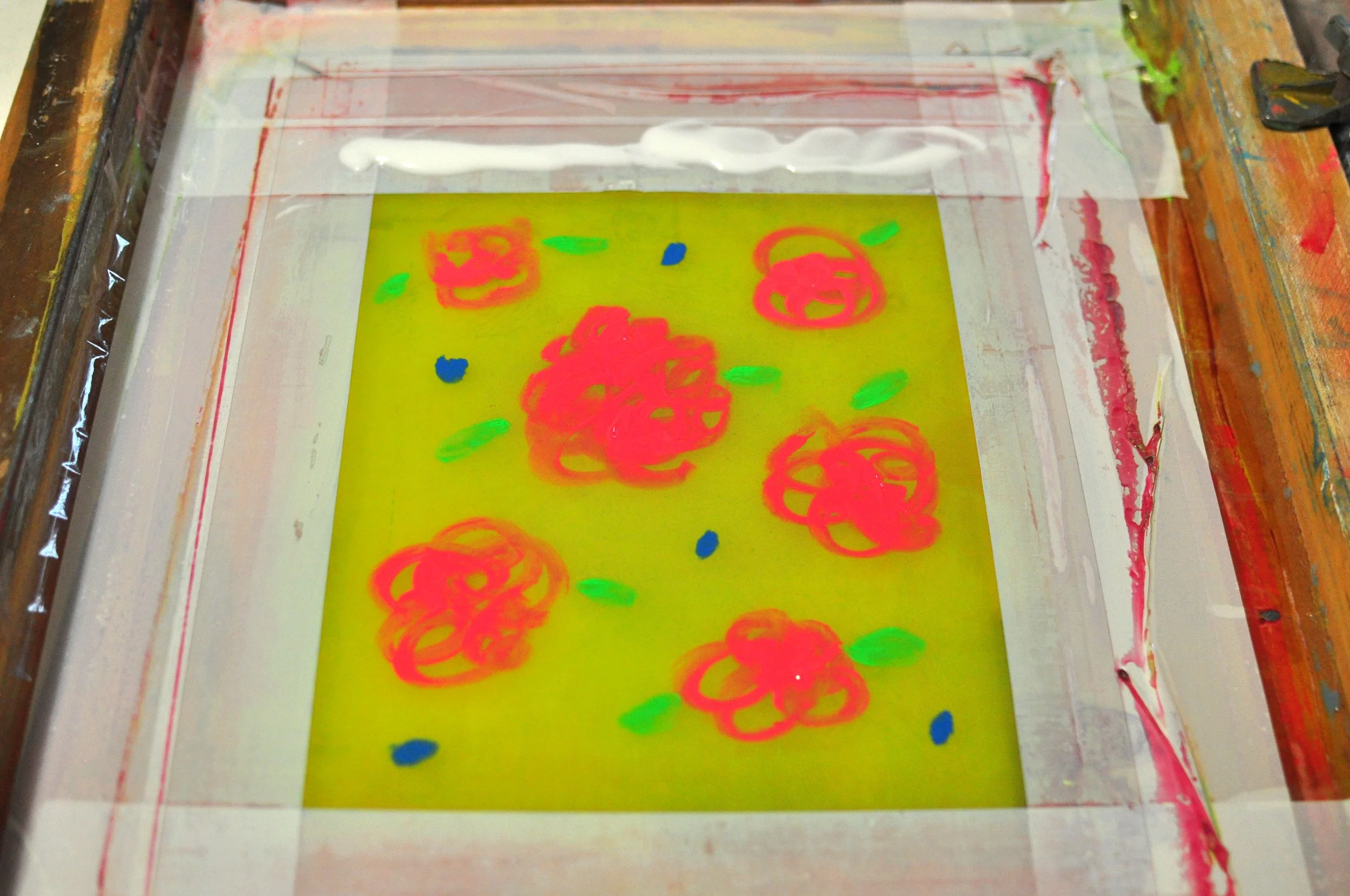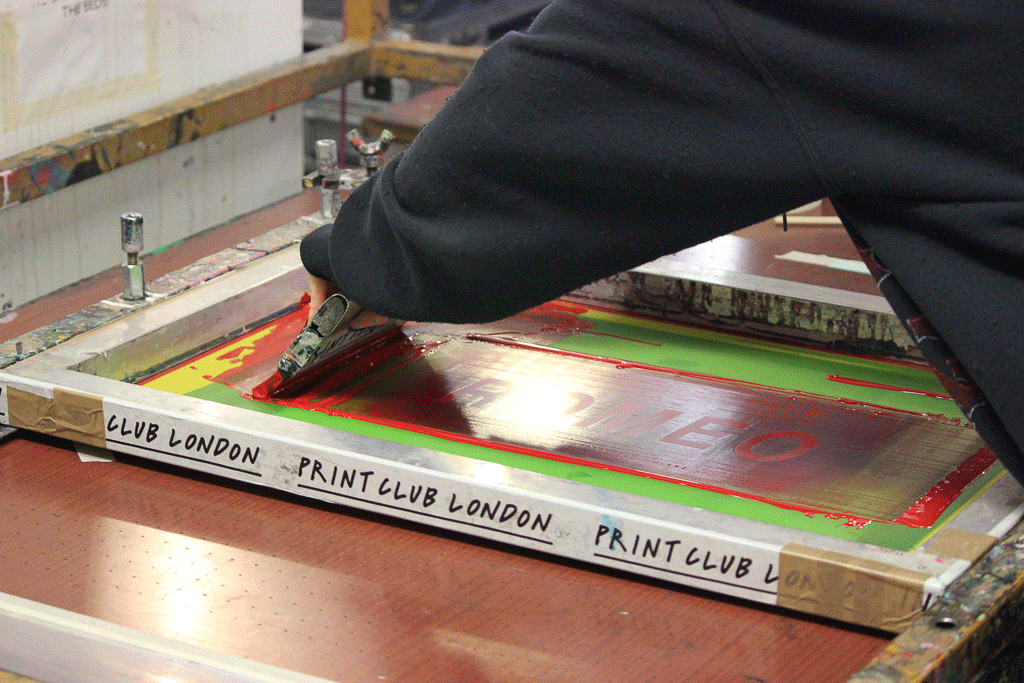Discover the Various Sorts Of Screen Printing Techniques for Your Next Job
Screen printing supplies a varied array of methods that can enhance any imaginative job. From standard methods like serigraphy to modern innovations such as direct-to-garment printing, each approach has its one-of-a-kind benefits. Specialized choices, including metal and eco-friendly inks, present a lot more opportunities. Comprehending these techniques can greatly influence the last end result. The difficulty lies in choosing the most ideal technique for details demands and preferred results. What elements should one consider?

The Essentials of Screen Printing
Screen printing might seem facility, it is essentially an uncomplicated procedure that entails moving ink via a mesh screen onto different surfaces. The technique begins with the creation of a stencil, which defines the style to be printed. This stencil is connected to a mesh screen, normally made from polyester or nylon. As soon as the pattern remains in place, ink is applied to the screen and pressed with the mesh making use of a squeegee, causing the desired pattern being printed on the underlying product.
Screen printing can be done on a large range of substrates, consisting of fabric, paper, and plastic, making it a flexible choice for different tasks. The process permits vivid shades and intricate layouts, making it popular in industries such as art, advertising and marketing, and fashion. Recognizing these essentials equips people with the foundational expertise needed to explore advanced techniques in screen printing.
Typical Screen Printing Techniques
Conventional screen printing strategies have actually been utilized for centuries, maintaining the craftsmanship and virtuosity of this method. This technique uses a mesh screen to transfer ink onto a substrate, such as textile or paper, enabling lasting and vivid designs. The process starts with producing a pattern, which blocks specific locations of the screen to regulate where the ink will certainly be applied.
One preferred technique is serigraphy, often utilized for restricted editions and creative prints. Another is the usage of water-based inks, which are environmentally friendly and offer a soft feel on textiles - 10:9 Design Screen Printing. In addition, typical approaches can include manual printing, where artisans use ink with a squeegee, making certain accuracy and attention to detail
These techniques continue to be valued in the sector for their tactile quality and the distinct structures they produce, interesting both consumers and developers who value the heritage of screen printing.
Digital Screen Printing Innovations
As the demand for faster manufacturing and customization in the printing market has actually surged, digital screen printing advancements have become a game-changer. This modern technology blends typical screen printing techniques with digital procedures, enabling for quick prototyping and complex designs that were previously challenging to attain. One significant advancement is the introduction of direct-to-garment (DTG) printing, which facilitates premium, full-color prints on various textiles without the demand for screens. Furthermore, advancements in ink solutions have resulted in environmentally friendly choices that maintain lively colors while decreasing environmental effect. Making use of automated systems even more improves production, lowering labor expenses and improving precision. These technologies not just cater to small batch orders and personalized designs however likewise enable quicker turn-around times, making them perfect for organizations concentrated on conference client demands in a busy market. Digital screen printing, consequently, stands for an essential evolution in the domain of printing techniques.
Specialty Screen Printing Techniques
Exploring specialty screen printing techniques exposes a diverse variety of techniques that press the borders of creativity and functionality in the printing industry. Amongst these, glow-in-the-dark inks offer a special visual impact, making designs come alive in low-light conditions. Metallic inks, recognized for their glittering coating, include a touch of luxury to printed materials. Another innovative approach is discharge printing, which eliminates dye from the material as opposed to adding ink, causing a soft, classic feel. High-density printing produces a raised texture on the surface area, improving tactile engagement. In addition, water-based inks are getting popularity for their dynamic shades and minimized ecological impact. Each of these specialty strategies deals with details design demands, allowing brands and musicians to develop standout products that reverberate with their audiences. By leveraging these approaches, organizations can boost their screen printing projects to brand-new heights, ensuring unforgettable impressions.
Eco-Friendly Screen Printing Options
Environment-friendly screen printing options are gaining grip as the sector changes towards sustainability. Lasting ink options and the usage of naturally degradable materials are crucial components in decreasing the ecological impact of the printing procedure. By adopting these techniques, screen printers can contribute to a much more lasting future while maintaining premium outcomes.
Sustainable Ink Options

Biodegradable Materials Usage
As the screen printing market progresses, the unification of biodegradable materials is ending up being significantly website vital for eco conscious techniques. Makers and developers are currently checking out inks and substrates made from all-natural, renewable energies that break down much more successfully than traditional equivalents. These eco-friendly alternatives lower plastic waste and decrease ecological influence, lining up with the growing demand for sustainable items.
Typical examples include water-based inks and natural cotton textiles, both of which lessen harmful chemicals and advertise eco-friendliness. Brand names that take on these products usually boost their market appeal, drawing in consumers that focus on sustainability. As recognition of environmental concerns proceeds to rise, the change in the direction of naturally degradable products in screen printing is most likely to acquire energy, fostering a greener industry requirement.
Choosing the Right Strategy for Your Job
Exactly how can one determine one of the most appropriate screen printing technique for a specific job? The decision depends upon a number of factors, including the product to be published on, the complexity of the layout, and the preferred manufacturing volume - 10:9 Design contact. Direct-to-garment printing is optimal for detailed designs with many colors, while typical screen printing succeeds for larger runs of less complex graphics.
Furthermore, factor to consider of the end-use of the printed product is essential. For exterior applications, techniques that supply resilience and climate resistance, such as plastisol ink, might be preferred. Alternatively, environmentally-conscious projects may take advantage of water-based inks or naturally degradable materials.
Ultimately, comprehending the job's one-of-a-kind needs permits for an informed selection, making certain both visual charm and practical durability. By assessing design intricacy, product compatibility, and production scale, one can successfully choose one of the most appropriate screen printing technique to fulfill their project's goals.
Frequently Asked Questions
What Is the Background of Screen Printing?
Screen printing came from old China around 1000 AD, developing through Japan and Europe. By the 20th century, it became popular in business art and style, revolutionizing how designs were generated and dispersed globally.

Just how Do I Prepare Artwork for Screen Printing?
To prepare artwork for screen printing, one should ensure high resolution, make use of an ideal shade setting, develop different layers for each color, and convert message to outlines, assuring compatibility with the printing process and desired outcome.
What Materials Are Best for Screen Printing?
The most effective materials for screen printing consist of high-quality inks, resilient screens, and suitable substratums like cotton, polyester, or blends. In addition, utilizing ideal solution and mops can improve the printing process and outcomes.
Can I Evaluate Print in the house?
Yes, screen printing in the house is feasible. With the ideal materials, configuration, and techniques, people can create high-grade prints. Cautious consideration of office and devices is crucial for effective outcomes.
What Are Typical Errors in Screen Printing?
Usual blunders in screen printing consist of inappropriate direct exposure times, poor ink uniformity, misalignment of screens, inadequate cleaning of materials, and neglecting to examine prints. These mistakes can endanger the quality and accuracy of the end product.
Screen printing may seem complex, it is basically a straightforward process that entails moving ink with a mesh screen onto various surface areas. As the need for faster manufacturing and modification in the printing market has risen, electronic screen printing advancements have arised as a game-changer. Checking out specialty screen printing approaches exposes a diverse selection of strategies that press the boundaries of creativity and performance in the printing industry. The ideal materials for screen printing consist of high-grade inks, sturdy displays, and suitable substrates like cotton, polyester, or blends (10:9 Design Texas). Common errors in screen printing consist of incorrect direct exposure times, insufficient ink consistency, imbalance of displays, insufficient cleansing of products, and ignoring to test prints